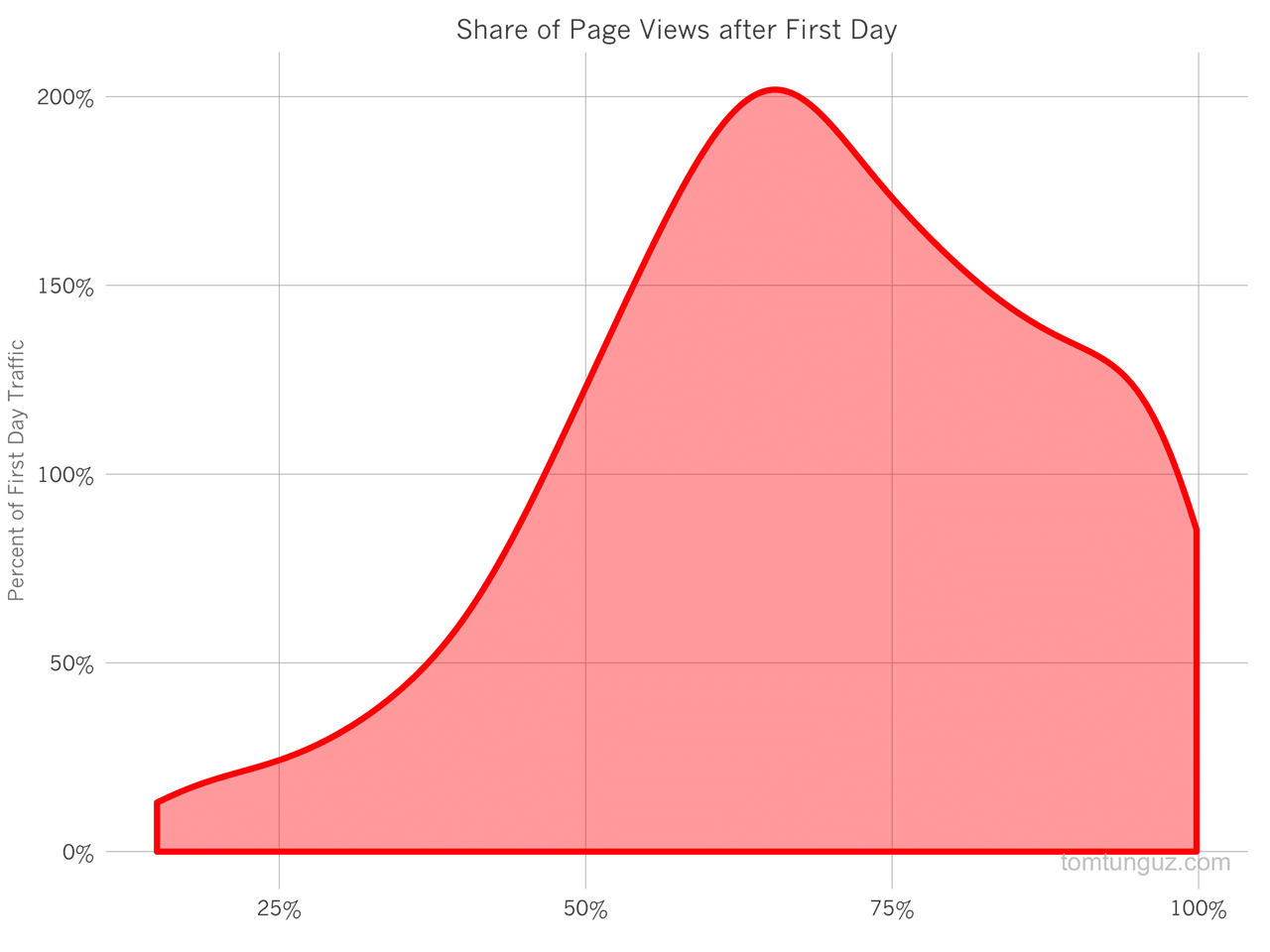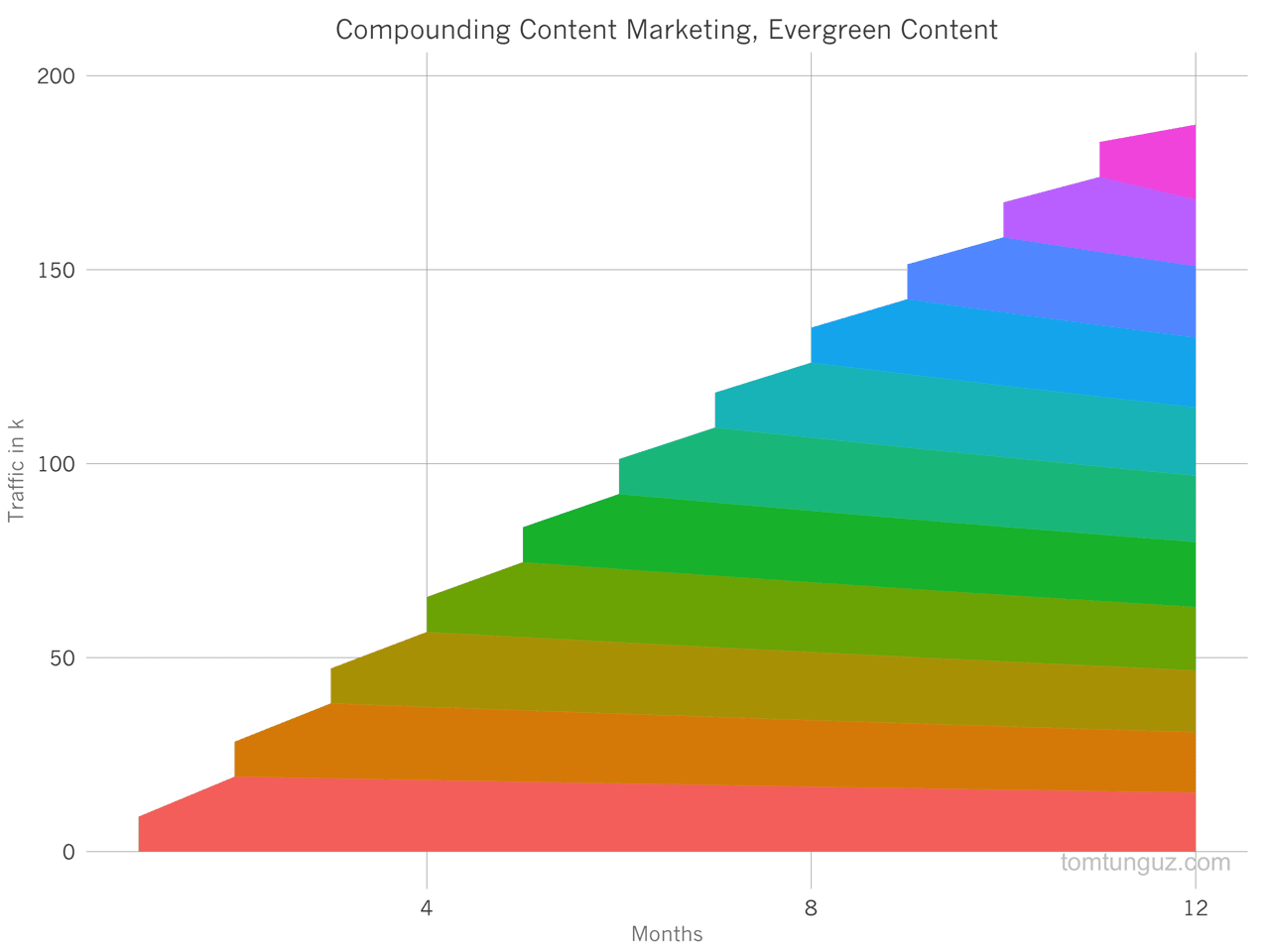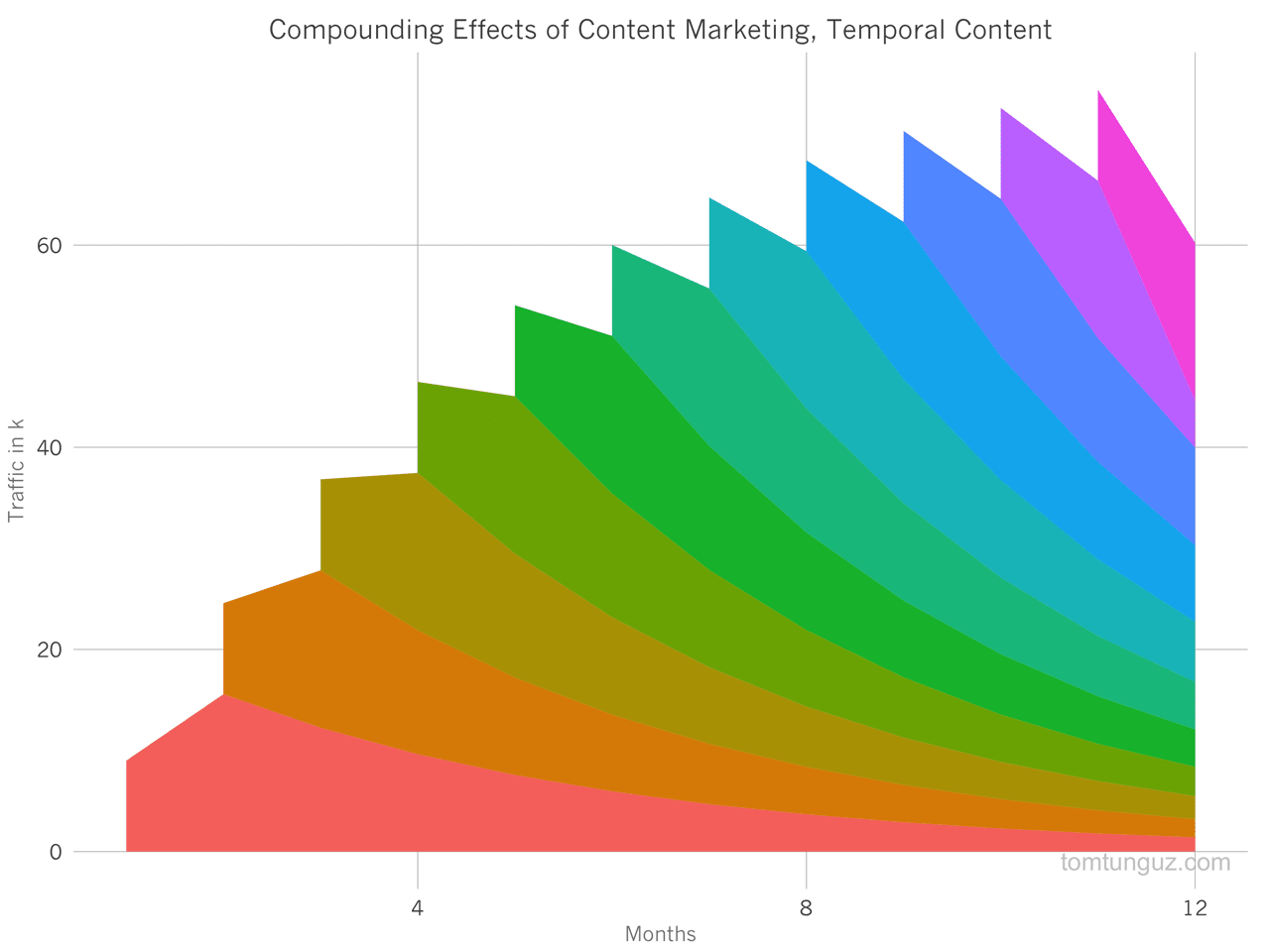3 minute read / Mar 3, 2015 /
The Compounding Returns of Content Marketing
A few weeks ago, I joined Mike Volpe, CMO of Hubspot, on the Growth Show where we had a great time talking about a few SaaS topics. A few listeners to the podcast picked a line from that podcast that I think is a really important point for content marketing. I said, “Content is one of the few forms of marketing that has a compounding return.”
Like a bank account that starts out small and earns incremental gains, but over time becomes quite large, content marketing efforts require consistent investment but ultimately can yield enormous results. Hubspot’s efforts prove the maxim. The attract more than 1M readers per month to their blog.
I’m going to use some of my own data and some hypothetical data to prove the point. Content isn’t just relevant for a day. Only about 1/3 of the views on a typical post on tomtunguz.com are generated on the first day. In fact, the chart above shows the probability density function for the share of page views by blog post for the past year. The chart shows that the typical blog post will generate between 1x and 2x as much traffic with time.
When creating a content marketing campaign, marketers must be deliberate about their balance between evergreen content, posts that are always interesting for readers, and temporal content, posts that are relevant just for a day or two. Evergreen posts often confer timeless advice. Temporal posts comment on recent events.
Content marketing campaigns that skew in favor of more evergreen content will grow faster and bigger than those which focus on temporal content. Let’s contrast two hypothetical blogs.
The first blog is an evergreen focused blog. Each post generates about 150 views on day one, and about 20 each subsequent day. Posts views decay according to a modest decay function, but still generate about 18 views per day a year later (this decay constant is based on this blog, but the figures are different.)
You can see the compounding effect clearly. In a year, the blog is generating more than 250k visitors per month. Remember, this is a hypothetical example, with perfect execution. But the idea still holds. Content marketing value compounds.
Contrast the evergreen strategy with a temporal strategy. In this example, each blog post generates about 150 posts on the first day, 20 on the second day, but the decay function is much more aggressive. By the end of the year, each post generates 1 view per day.
This blog’s traffic caps out at about 70k visitors, less than a third of the previous one.
In reality, content marketing campaigns balance evergreen and temporal content. While it may not generate long term returns, temporal content keeps blogs fresh. But to benefit from the compounding effects of content marketing, marketers should actively invest in building evergreen content that keeps contributing to traffic growth, building the company’s brand and eventually generating sales.


